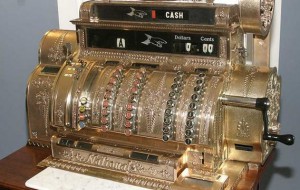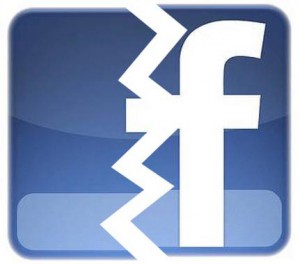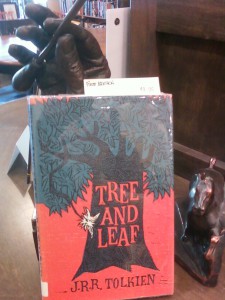The clerk had already pressed the button on the register when the lady said, “I think I have the two cents.” The young man looked at the machine and then looked at his customer. He hesitantly dipped his hand toward the cash drawer, and then stopped.
“That’s okay, ma’am,” he said to her. And then drew two bills and ninety-eight cents into his palm, set it atop her receipt, and delivered it into her hand – right over the two pennies she was offering.
Obviously, there were no math requirements for his job.
Or – am I being too critical? Maybe the thinking days are long gone, along with antiques like the ones in the images (one of which is sitting on the shop counter here…)
The ‘Amount Tendered” button is found on every cash register these days, allowing the machine to figure the correct change and display it on the machine and receipt. Maybe there ought to be a ‘Common Sense’ button, too.
If the clerk accidentally presses an extra ‘0’ when typing in a $5.00 amount tendered, does he give change for a $50 because the machine says he should? I’m pretty sure years ago one of my cashiers made that mistake before I reassigned him to a different position. The daily cash totals that had been out-of-whack since his hiring quickly came back in line.
Maybe I’m clinging to the old ways. Maybe the young clerk believed that the “Amount Tendered’ button would affect his cash drawer, and giving change other than what it displayed might have caused accounting problems at the end of his shift.
It wouldn’t have.
It wasn’t so much the math. Two plus ninety-eight is one-hundred. A dollar. He would have known that. It was the logic of the offered two-cents that threw him.
My good friend Mark will remember the machines we worked with at the grocery store, the ones with the pop-up amounts and tax-totals that we had to figure in our heads. That old machine on the book shop counter reminds me of those days when thinking wasn’t optional.
This afternoon while standing next in line, I had my pocket change in hand and was prepared when the total came up.
It was $13.01.
He looked a little startled when I set a penny on top of the three fives, but he sounded confident when he looked at the screen and declared, “Your change is two dollars.” He handed the bills and receipt to me and wished me a good afternoon. I think the lesson in cash register change-making was lost on him.
Here’s hoping our local bankers are a little more demanding in the screening for teller positions.
Come visit!
McHuston
Booksellers & Irish Bistro
Rose District
122 South Main St. Broken Arrow OK!



